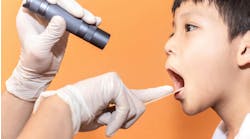With the onset of the COVID-19 pandemic in 2020, teledentistry became increasingly popular.1 In 2021, 23% of dental practices were using teledentistry to help treat their patients.2 But now that the pandemic has ended, you may be asking: What happened to teledentistry?
Dental practices across the country have reopened, restrictions have been eased, and we have gone back to face-to-face dental treatment. Many thought teledentistry would be here to stay, and yet it doesn’t seem to be one of the many buzzwords circulating throughout the dental world today. Like the pandemic, teledentistry has slowly faded away.
In 2020, it was proven that teledentistry can provide access to care.1 We know that there are numerous segments of the American population without access to routine and emergency dental care.3 So why is teledentistry disappearing when it could be doing so much good?
The difference between telehealth and teledentistry
First, we must remember that there is a difference between telehealth and teledentistry. Telehealth is defined as providing medical information by a provider in a nontraditional setting with the use of electronics and electronic information.4 Teledentistry is virtual dental care that can be live or viewed through a message and then consulted on later.3 When teledentistry is live, it is called synchronous; when it is being viewed as a message, it is called asynchronous.3
Telehealth is currently used more often than teledentistry, and when telehealth initially began, its acceptance rate was much faster.4,5 The American Dental Association recognized that teledentistry’s usage accelerated faster due to the start of the COVID-19 pandemic.6
Teledentistry’s origins
Teledentistry was first recognized in 2015. In 2018, two CDT codes were developed to help providers who were using teledentistry, and then in 2020, nine new diagnostic codes were added as the use of teledentistry increased.6
Advancements with teledentistry may not have happened as quickly if patients had not been denied in-person dental visits due to the sheltering in place guidelines imposed during the COVID-19 pandemic and the fact that most dental offices were closed due to state regulations.6 Despite its slow start, teledentistry was considered a positive experience by 86% of the patients using it in 2020, according to a survey.6
Teldentistry: The good and the bad
Unfortunately, what goes up must come down. While many professionals recognized that teledentistry could bring about a lot of good for public dental health, it also has its limitations.
Teledentistry can save money because patients who would normally seek dental pain consultations in emergency rooms or urgent care facilities can use a teledentistry option instead.1,3,5,6 However, some dental professionals are hesitant to use teledentistry because they aren’t sure how much diagnosing they can do for a patient with dental pain just by listening to their complaints via phone or a digital messaging system. Many also wonder about the quality of digital photos patients can take of the inside of their mouths.3,6
When it comes to money, there has been a slower acceptance rate for teledentistry because of insurance reimbursement rates and state governance it currently receives.3,7 Each state and insurance company has unique regulations to decide what services can be provided by the dentist and what can be billed out.3,7 Because of this, some dental professionals have abandoned the teledentistry model because they feel it is too complicated to navigate.3,7 Less than half of the 50 states specifically outline teledentistry regulations and reimbursements.3
One of the biggest hang-ups that currently slows down teledentistry is the question of who is considered a recognized provider.3,6,7 Only dentists can actively diagnose or treat both synchronous and asynchronous teledentistry claims.3,6,7 Many other dental professionals are interested in teledentistry, but their hands are tied.
Some pilot studies have shown how beneficial teledentistry can be when dental team members collaborate with colleagues to provide better access to care in remote areas. Photos can be taken of patients, and their concerns can be relayed via messages to the dentist for a diagnosis.3,6
Although dental professionals are interested in teledentistry and the benefits it could offer—particularly if dental professionals other than just dentists were able to provide care—states have yet to relax their regulations.
A call for action
For those of us who recognize that—despite its limitations—teledentistry could provide many of the underserved with the dental care they need, a call to action is needed. Medical professionals and the public need to ask state legislators to expand teledentistry so that more options are available to those who can provide it, define what these professionals can provide, and establish reimbursement rates. If the benefits outweigh the limitations, perhaps teledentistry will once again become a buzzword in dentistry as access to care is expanded.
Editor’s note: This article first appeared in Clinical Insights newsletter, a publication of the Endeavor Business Media Dental Group. Read more articles and subscribe.
More about teledentistry ... How intraoral cameras and teledentistry educate patients, build trust, and improve oral health
References
- Fry D. Yes, teledentistry is real – and it means more access to care. AHIP. June 16, 2022. https://www.ahip.org/news/articles/yes-teledentistry-is-real-and-it-means-more-access-to-care
- Howarth J. Top 9 dental industry trends (2024-2026). Exploding Topics. January 9, 2024. https://explodingtopics.com/blog/dental-industry-trends
- Pallardy C. Caring at a distance: the current state of teledentistry. Ontario Academy of General Dentistry. July 13, 2020. https://www.agd.org/constituent/news/2020/07/13/caring-at-a-distance-the-current-state-of-teledentistry
- Why use is telehealth? Health Resources and Services Administration (HRSA). Updated February 29, 2024. https://telehealth.hhs.gov/patients/understanding-telehealth
- Teledentistry and its evolution since COVID-19. Dentistry Today. November 16, 2022. https://www.dentistrytoday.com/teledentistry-and-its-evolution-since-covid-19/
- Burger D. Teledentistry poised for a vivid future. ADA News. June 12, 2023. https://adanews.ada.org/ada-news/2023/june/teledentistry-poised-for-vivid-future/
- ADA policy on teledentistry. American Dental Association. Updated 2020. https://www.ada.org/about/governance/current-policies/ada-policy-on-teledentistry
Tracee S. Dahm, MS, BSDH, RDH, is an adjunct clinical instructor for the North Idaho College School of Dental Hygiene in Coeur d’Alene, Idaho. Tracee also works in private practice. Her research interests include trends in dental hygiene and improving access to dental care for the underserved. She can be reached at [email protected].







